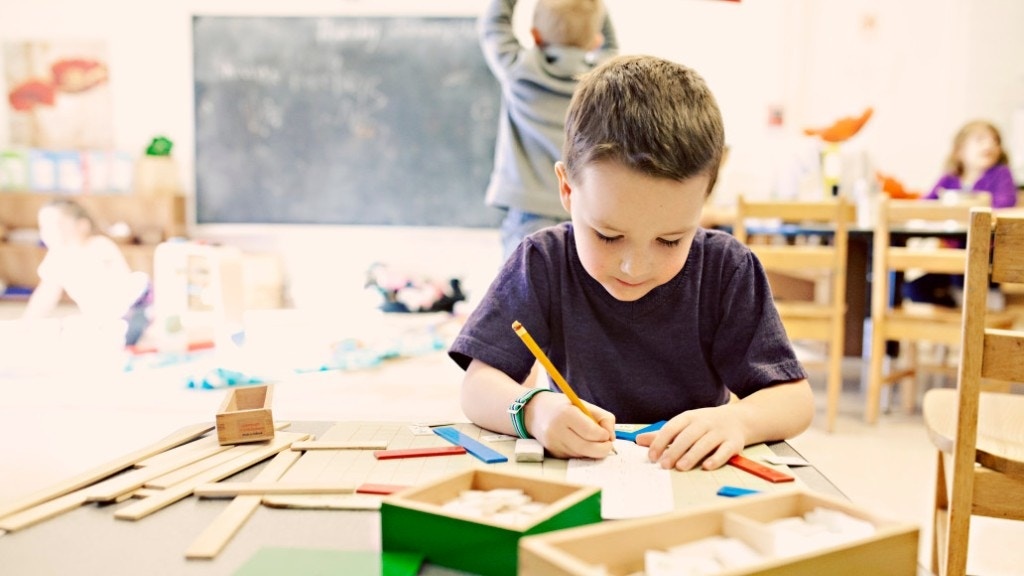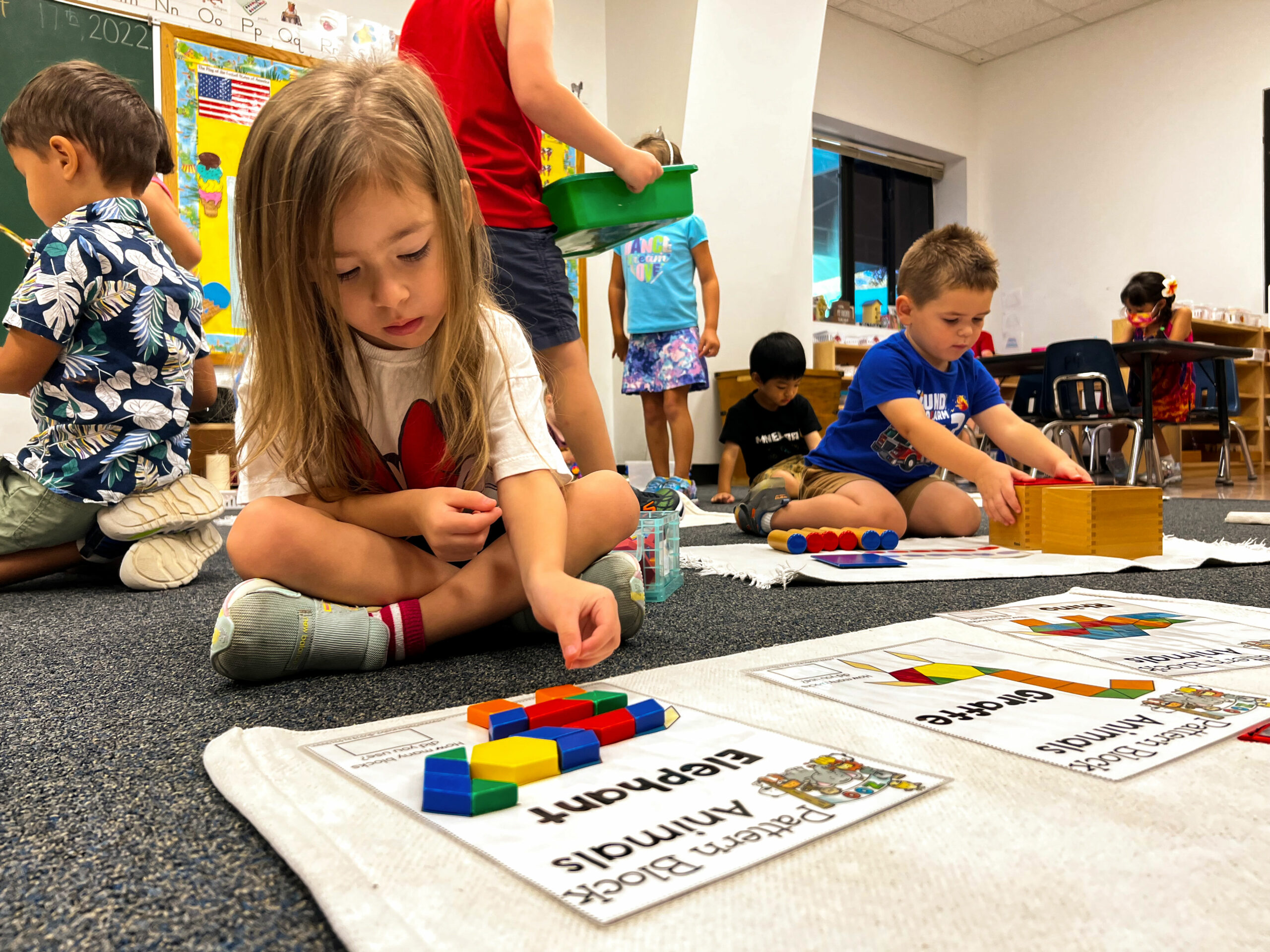The Montessori Movement
Unlock the Power of Learning: How Movement Can Revolutionize Your Education
If you wish to give the means to the child for his development you must give them in such a way that the child can, and must move. …In all her books, lectures, and conversations, Montessori incessantly returns to this great theme of the importance of movement.
—E.M. Standing Maria Montessori, Her Life, and Work
Although the movement is essential for all of us to navigate life, it is particularly crucial for children and their learning. When children engage in movement, their brains are stimulated differently than when they passively absorb information through watching or listening. Given the prevalence of sedentary lifestyles and screen time, it’s important to consider what types of activities are truly necessary for children. The brain relies on a variety of movements to develop properly. For instance, just think about the pathways in the brain that control typing on a keyboard. When first learning to type, it takes concentrated effort to move fingers to the correct keys. But with practice, typing becomes second nature. Similarly, learning to hold a pencil, form letters, and convey meaning through writing all require practice. Remember watching your child’s early attempts at walking, and how they stumbled and fell before finally standing upright?
The intangible qualities of joy and self-esteem cannot be quantified by IQ or SAT scores. Intelligence and creativity blossom when children explore the world and figure out how things work on their own.

The Montessori Way
Maria Montessori, in her book The Discovery of the Child, observed that movement plays a significant role in enhancing learning. She asserted that training the muscles should become part of children’s daily lives to promote a deeper connection with their activities. The Montessori approach provides a Prepared Environment that allows freedom of movement. Students are not tethered to assigned seats and can move around the classroom without seeking permission. They can choose an activity, walk to its location, and bring it to a table or mat. Much work is done on small rugs on the floor. A Montessori student enthusiastically stated that they appreciated the freedom to walk around, choose their own work, and even make their own snack.
Montessori’s method of education is founded on the belief that learning and movement are intertwined. Children develop their abilities to recognize letter sounds by tracing Sandpaper Letters. They match colors by using Color Tablets and identifying corresponding colors in the classroom. Children learn about weight and size through handling Cylinder Blocks or Pink Tower. By moving about, children not only discover themselves but also the larger world around them.

Moving Around at Home
Your child probably already engages in physical activities like dancing, playing catch, or going to the playground. While these activities are important for developing large muscles, it’s also crucial to focus on the less obvious movements that are necessary for their growth and learning.
- It is advisable to minimize the use of television and computer screens for children, even if they seem to keep them calm and offer educational content. The screens have a hypnotic effect, leaving the child in a passive state. The experience of building a block tower in real life is way more beneficial than doing it on a touch screen. Although an older child can gain knowledge from informative programs, it only becomes valuable when combined with actual experiences.
- As soon as a child starts to move, they begin to develop their independence. It’s important to create a safe and unobstructed environment in your home, especially in a few rooms, where your young child can move around freely. Ensure that there are engaging toys and activities within view and reachable range for your child to play with independently.
- Engage kids in performing household tasks by assigning tasks according to their age and capability. For example, the youngest child can be asked to set the table, one item at a time, while the older child can be given more complex tasks like chopping vegetables, pouring drinks, or washing dishes.
- When you have a lot of tasks to do, it’s a good idea to provide your child with a nearby activity to keep them occupied. This could involve setting up an easel for them to paint on or providing blocks for them to build with on a rug nearby.
- Before entering the house after a car ride, it is recommended to go for a short walk around the block or up the street.
- Engage with your child by playing a game with them when they seek your attention. For instance, challenge them to maneuver a toy truck through the hallway and into the family room without it bumping into any objects, similar to how professional drivers operate their vehicles. Alternatively, see how many blocks they can stack on top of each other or encourage them to locate all the red items in the room.
Assisting your child in gaining mastery over their movements can enhance their physical and mental growth. When you exhibit the task of placing the plate on the table without creating any noise and expressing your satisfaction, your child will feel delighted to emulate and improve their skills.
No Substitute for Movement
By implementing the aforementioned recommendations, you will be able to create an environment that enables you to witness your child’s educational progress and exploration. You will have the opportunity to watch their mind in motion as they start comprehending the functioning of different objects.
“The young child is very hand-minded, and the materials are geared to his need to learn through movement because it is a movement that starts the intellect working.”
—Elizabeth Hainstock Teaching Montessori in the Home
—by Jane M. Jacobs, M.A., Montessori Educational Consultant at Montessori Services. She is a trained primary Montessori directress and also a Licensed Marriage and Family Therapist. She has taught children aged 2 to 7 years in Montessori schools, Headstart, and also in a preschool for children with developmental challenges. In her counseling practice, she helps individuals, couples, and families.
—Originally Published in 2014
>> Read more: Montessori Education: How Montessori’s Unique Approach to Movement Changed the Game
